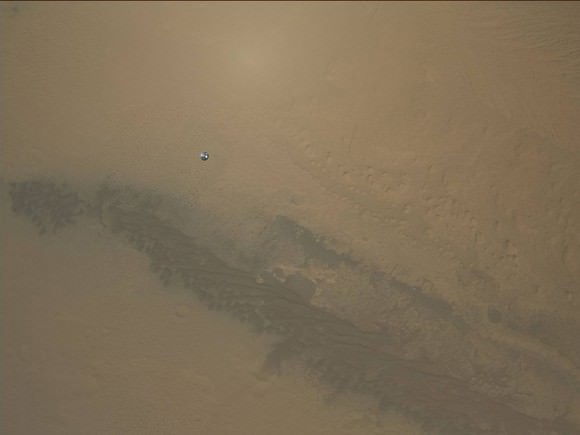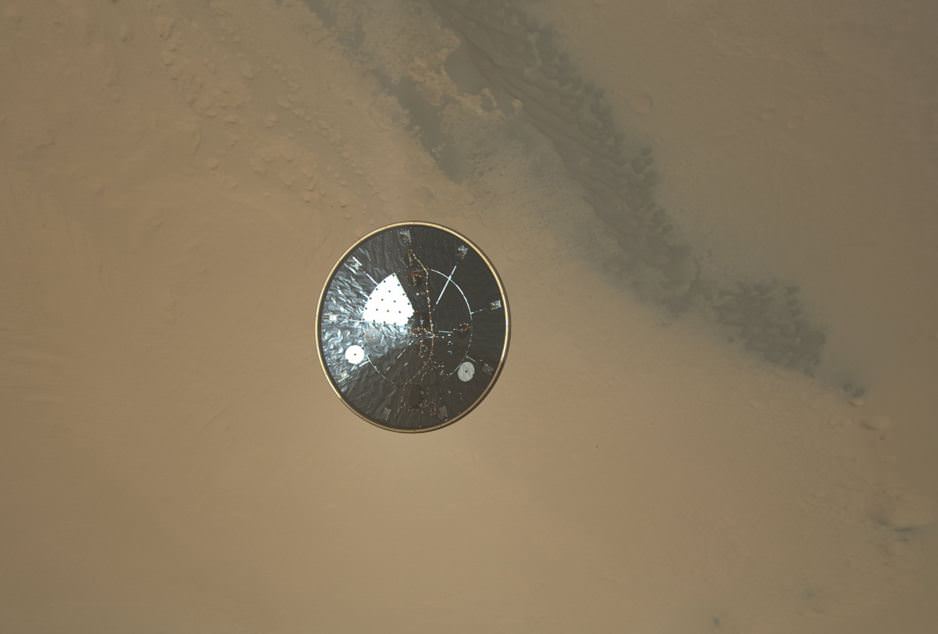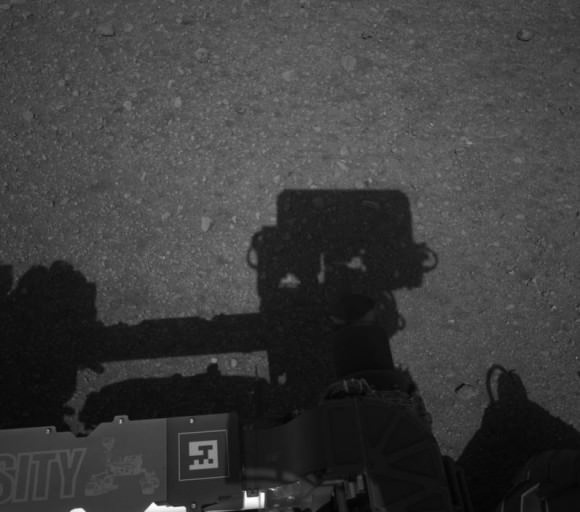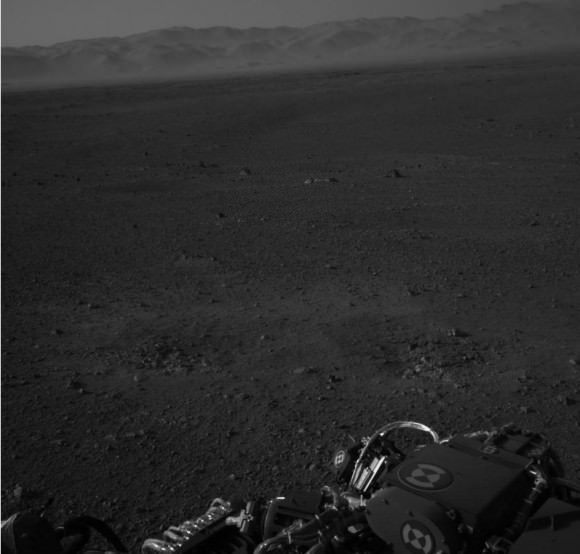“Irony: The first real flying saucer is from Earth. And it landed on Mars.”
That’s a quote we saw via UT writer Ray Sanders, from a great graphic making its way around the internet. But amazingly, it’s true. Above is a high resolution image from the Mars Science Laboratory’s MARDI instrument showing the heat shield falling away from the spacecraft and heading towards Mars, looking like a classic flying saucer UFO. This image shows the 4.5-meter (15-foot) diameter heat shield when it was about 16 meters (50 feet) from the spacecraft.
The image shows so much detail that “You can actually see the stitching in the thermal blanket and some wiring” said Mike Malin during a press conference at JPL today.
Here’s a new, higher resolution video of the heat shield’s descent from what was previously available:
This image shows the inside surface of the heat shield, with its protective multi-layered insulation. The bright patches are calibration targets for MARDI. Also visible is the Mars Science Laboratory Entry, Descent, and Landing Instrument (MEDLI) hardware attached to the inside surface.
Malin said that at this range, the image has a spatial scale of 0.4 inches (1 cm) per pixel. It is the 36th MARDI image, obtained about three seconds after heat shield separation and about two and one-half minutes before touchdown.
Emily Lakdawalla has another image that she “tweaked” that shows another look at the heat shield when it is farther away from MSL:

Caption: MSL’s heat shield falling towards Mars. Credit: NASA/JPL/MSSS/Emily Lakdawalla
“It is still mind-blowing to think that this snapshot was taken by a spacecraft flying in the air above a different planet,” Emily wrote on the Planetary Blog.
In other MSL news, Curiosity’s mast is deployed, evidenced by this shadow self-portrait:
And also from the images from the Navigation Cameras on the mast:
At the press conference, Curiosity’s Chief Scientist John Grotzinger said the view reminded him of the Mojave Desert, and remarked on the striking familiarity of an almost “Earth-like” plain with the crater rim in the distance. There also appears to be a little haze in the air that Grotzinger likened to “LA smog.”
Jason Major also posted a panoramic view of Curiosity’s surroundings by combining a couple of shots from the Navigation cameras.
And here’s that great graphic by Ken Watson:
Here’s where you can find more of the latest images from MSL.





Mind blowing indeed! An auspicious start to a great endeavor! In a word… WOW! I am chomping at the bit on every byte as they come down! Yassssss… GO CURIOSITY! You GO!
that looks great on the big screen tv. best pano yet.
it looks a bit larger than the meteor crater in Nevada.
looks like it would be some east mountain biking to those hills.
Gale crater is quite large (96 miles in diameter). And the crater you refer to is in AZ, not NV. and it is very small in comparison (about 4000 feet in diameter). Mountain biking on Mars would be….. interesting! 🙂
Fantastic.
So, it is possible to fly “flying saucers” from one planet to another. Why so many scientists deny the possibility that Earth can be visited by some kind of drones from other planets? I do not say that this is what is happening, I am just saying that we should not reject such a possibility.
Actually, scientist do not “deny” the possibility of extraterrestrial visitors, they are just considered,”unlikely”. Big difference.
Did you know the earth is really flat & they have been lieing to us.